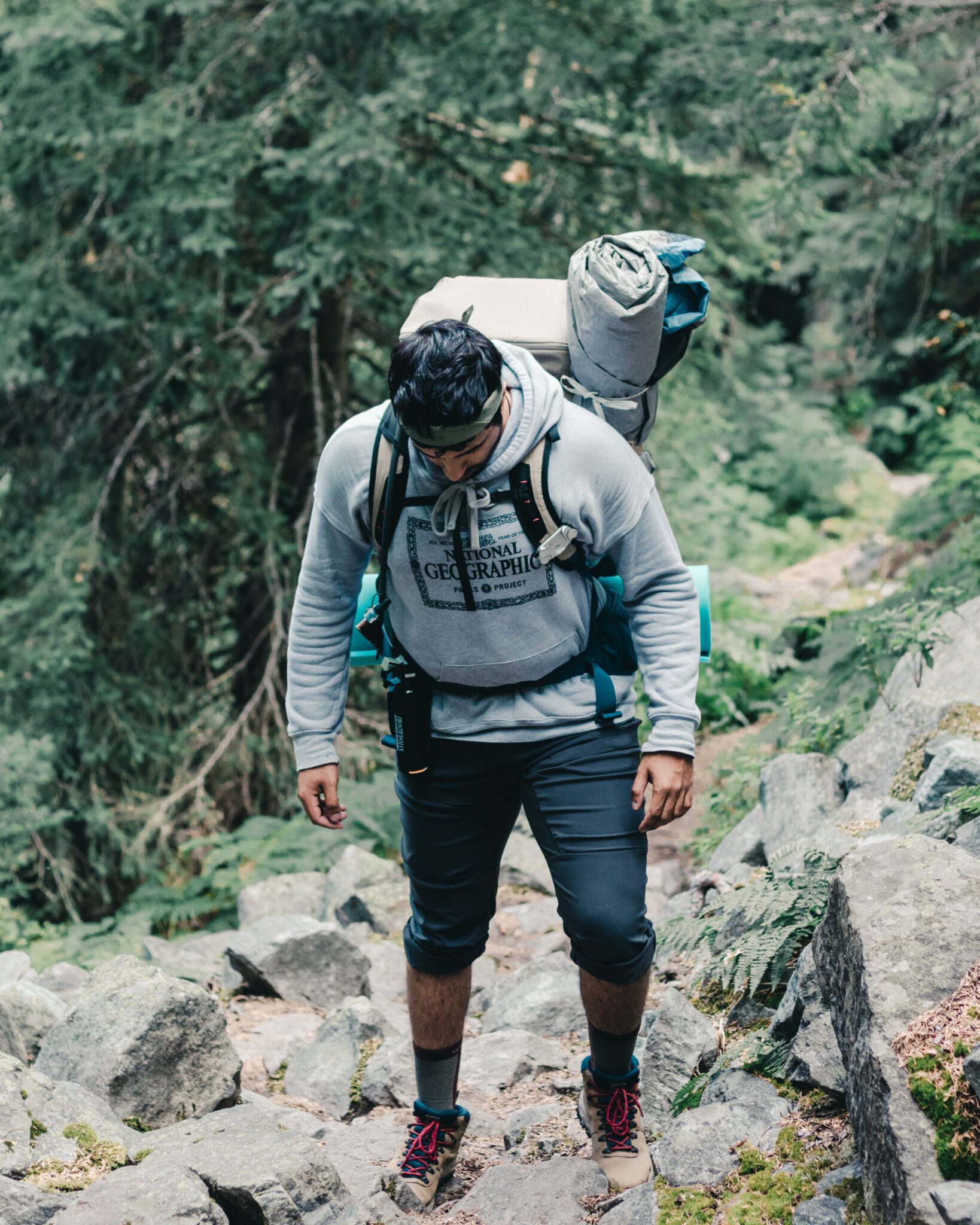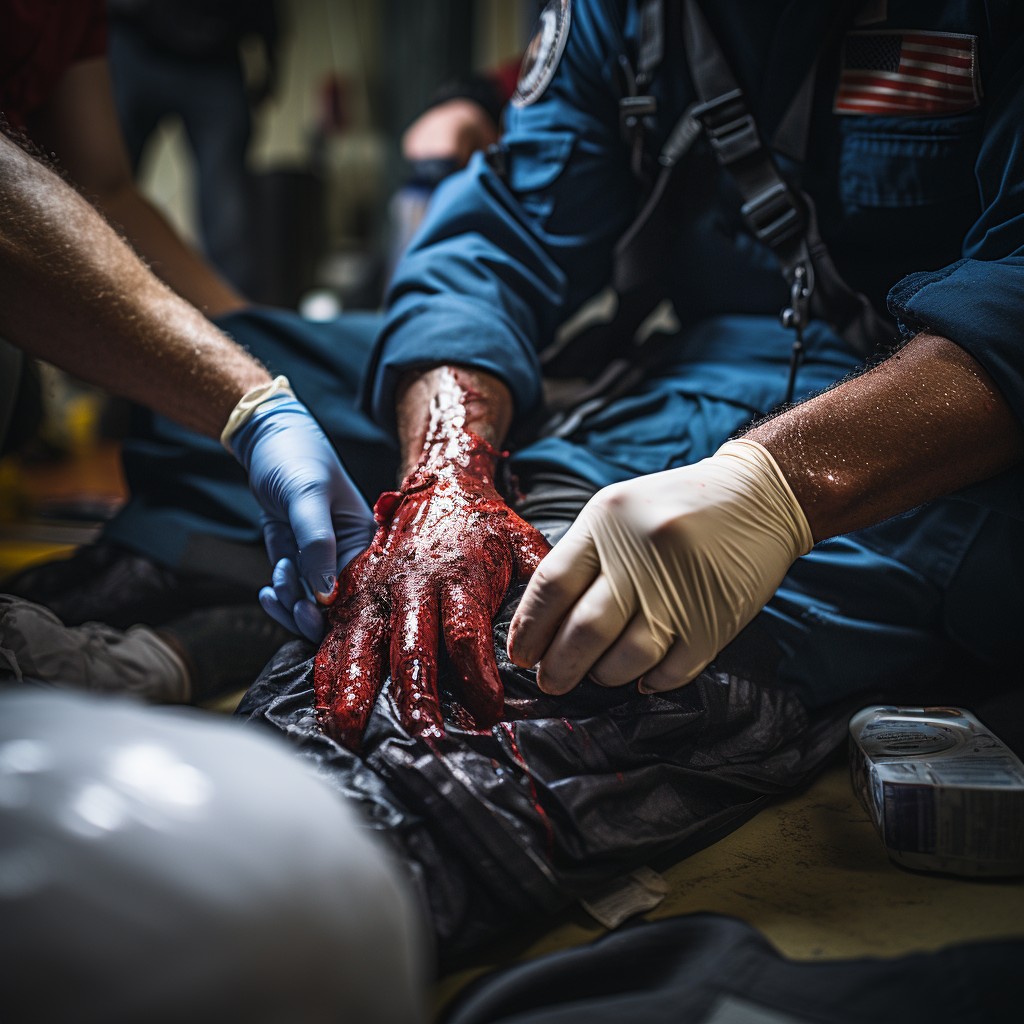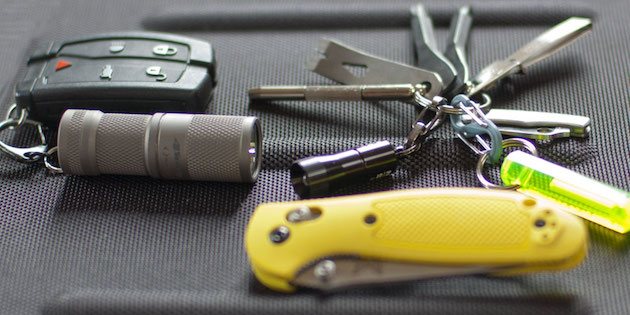Survival skills will help you, well, survive under hostile conditions. Without these skills you are at a distinct disadvantage. Here are my top ten skills that you must be absolutely good at. So best to learn them, practice them:
1. Shelter Building
Being able to construct shelter from natural materials or using whatever resources are available in the environment to protect yourself from the elements is crucial for survival.
Protection from the Elements: Shelter provides protection from harsh weather conditions; rain, wind, snow and extreme temperatures. And once inside can help retain body heat. Exposure to extreme weather can lead to hypothermia, frostbite, or heatstroke, and dehydration, all of which can be life-threatening.
Psychological Comfort: Having a shelter can provide a sense of security and psychological comfort, which is crucial for maintaining morale and mental well-being in survival situations.
Privacy and Safety: Shelter provides a private space where you can rest, recuperate, and feel safe from potential threats such as predators or adverse weather conditions.
Rest and Recovery: Getting enough rest is essential for maintaining physical and mental health during survival situations. A shelter provides a more comfortable and conducive space for rest and recovery compared to being exposed to the elements.
Storage and Organisation: A shelter can serve as a place to store supplies, equipment, and resources, keeping them dry and organised.
Long-Term Survival: A well-built shelter can help you survive long-term by providing a stable and sustainable living environment.
Learning shelter-building skills as a part of survival training or preparedness efforts will prepare you with practical knowledge and abilities to handle emergency situations effectively, increasing your chances of survival and resilience in the face of adversity.
2. Fire Starting
Knowing how to start a fire without matches or a lighter is a basic survival skill for anybody preparing to survive with style.
Warmth: Fire provides warmth, helping to regulate body temperature and prevent hypothermia, particularly in cold or wet environments.
Cooking and Food Preparation: Fire is for cooking, making food safer to consume. It also helps in purifying water by boiling, making it safer to drink.
Signal for Rescue: Fire can be used as a visible signal for rescue teams increasing the chances of being located and rescued.
Security and Protection: Fire can repel wild animals and insects, reducing the risk of encounters or attacks. It also provides a sense of security and comfort, particularly during the night when visibility is low.
Light Source: Fire provides illumination, allowing you to see and perform tasks during nighttime.
Psychological Support: Sitting by a camp fire has a calming effect and can boost morale, providing a sense of companionship, safety, and hope during challenging times.
Tool Making: Fire can be used to harden and shape materials for tool-making, such as making wooden tools or hardening spear points for hunting.
Sanitation: Fire can be used to sterilise and disinfect tools, cooking utensils, and surfaces, reducing the risk of infections and illnesses.
The ability to start a fire is a fundamental survival skill that increases your chances of survival making it a crucial skill for anyone preparing for emergencies.
3. Finding and Purifying Water
Finding and purifying water is a top survival skill. You will not survive without water to drink. Knowing how to find, collect and purify water is essential for survival.
Hydration: Water is essential for maintaining hydration, which is crucial for overall health and bodily functions. Dehydration can lead to fatigue, weakness, confusion, and eventually death.
Regulation of Body Temperature: Water plays a vital role in regulating body temperature through evaporating sweat which takes heat from the body. This helps prevent heat-related illnesses such as heatstroke.
Nutrient Absorption: Water is essential for digesting food and absorbing nutrients from the digestive tract. Without sufficient water intake, digestion and nutrient absorption will not happen leading to malnutrition.
First Aid and Wound Cleaning: Clean water is needed to clean wounds and prevent infections. In survival situations where medical resources are limited, access to clean water becomes even more critical for basic first aid.
Cooking and Food Preparation: Water is necessary for cooking food and rehydrating dry or dehydrated food items, making them safer to consume and improving their taste and nutritional value.
Sanitation and Hygiene: Clean water is essential for personal hygiene, such as washing hands, bathing, and cleaning cooking utensils. Proper hygiene practices help prevent the spread of diseases and infections, particularly in crowded or unsanitary conditions.
Finding and purifying water is a fundamental survival skill that directly impacts hydration, health, sanitation, and overall well-being in survival situations. It is essential for sustaining life and increasing the chances of survival when SHTF.
4. Foraging and Hunting
Foraging and hunting – knowing how to identify plants you can eat, and how to catch and kill animals are essential survival skills.
Nutritional Needs: Without access to food you will die. Foraging and hunting provide essential nutrients, proteins, and calories necessary for maintaining energy levels, muscle function, and overall health during survival scenarios.
Self-Reliance: Developing skills in foraging and hunting will make you self-reliant and independent, reducing dependence on other people for food.
Foraging and hunting are fundamental survival skills that provide essential food resources, promote self-reliance, These skills increase resilience and survival capabilities in challenging situations where access to conventional food sources may be limited or unavailable.
5. Navigation
Navigation is critical in finding your way to safety in various survival scenarios.
Basic navigation skills using a map and compass, or by reading natural signs such as the sun, stars, and landmarks, can help prevent getting lost and aid in finding your way to safety.
Getting Lost: Navigation skills will help you avoid getting lost in unfamiliar or remote environments, reducing the risk of becoming disoriented and increasing the likelihood of finding a way back to safety.
Getting Found: Navigation skills include understanding maps, landmarks, and geographical features, which can be used to describe your location increasing the chances of being located and rescued.
Finding Resources: Effective navigation will help you locate essential resources such as water, food, shelter materials, and firewood, improving your chances of survival and self-sufficiency in the wilderness.
Safety and Security: Knowing how to navigate safely through rough terrain, natural obstacles, and potential dangers such as cliffs, rivers, or unstable terrain reduces the risk of accidents, injuries, or encounters with wild animals.
Don’t Rely On SatNav or Google Maps: Learning and practicing traditional navigation skills provides a backup method for finding direction and orientation. GPS and smartphones are great until you get ‘flat-batt’ or the network stops working.
Being able to navigation using traditional methods is a fundamental survival skill that will help you find your way, find resources, avoid hazards, and navigate safely through whatever jungle you are in.
6. First Aid
You need to know how to treat injuries, from cuts and bruises to broken limbs, as well as recognising signs of dehydration or hypothermia.
Life-Saving Procedures: Learning first aid will help you administer life-saving interventions CPR (Cardiopulmonary Resuscitation) for someone in cardiac arrest or controlling severe bleeding to prevent shock.
Prevention of Further Injury: Knowing first aid procedures will help you prevent further injury or deterioration of health by stabilising the condition of the injured person and providing the right care until professional medical help arrives.
Treatment of Common Injuries: First aid training covers a wide range of common injuries and medical emergencies, including burns, fractures, sprains, cuts, insect bites, allergic reactions, and heat-related illnesses, allowing you to respond according to the need.
Prevention of Infection: Proper wound care and hygiene that you learn in first aid training will help prevent infection and promote healing.
Emergency Preparedness: First aid training equips you with the knowledge and skills to respond effectively to medical emergencies in various settings, including wilderness environments, natural disasters and everyday life situations.
7. Self-defence
Self-defence skills will help protect you against wildlife threats or human predators in survival situations. This includes techniques for avoiding confrontations and defending yourself if necessary.
Personal Safety: Self-defence skills will give you the confidence to protect yourself from physical harm and potential threats.
Risk Reduction: Learning self-defence will help you recognise and avoid potentially dangerous situations, reducing the likelihood of becoming victims of violence or assault.
Confidence and Empowerment: Developing self-defence skills boosts confidence and self-esteem, providing you with a sense of empowerment and control over their personal safety.
Physical Fitness and Conditioning: Many self-defence techniques involve physical activity and conditioning, which can improve strength, agility, coordination, and overall fitness levels, keeping you physically fit and prepared for survival situations.
8. Knot tying and Rope Work
Knowing how to tie the right knot quickly and under stress conditions is a core survival skill you will need for survival.
Shelter Construction: You will need to tie knots when building a shelter using various materials from ropes to para cord, using branches or tarps or anything else you can find.
Repair and Maintenance: Knowing how to tie a variety of knots will help you repair and maintain essential gear and equipment, such as backpacks, tents, or clothing, increasing their longevity and functionality in survival situations.
First Aid and Emergency Splinting: Learn and practice tying the knots used for first aid. Improvising splints, immobilising broken limbs, preventing further injury.
Animal Handling and Control: Being creative with rope and knots you can construct temporary enclosures and restraints for handling and controlling animals safely.
Making Fires and Cooking: Rope and para cord can be used to create bow drills and cooking implements like tripods and pot hangers.
9. Using Basic Hand Tools
Get familiar with and practice using basic hand tools like knives, axes, and saws. Hand tools are used in building shelters, preparing and coking food.
Shelter Construction: Tools like knives, axes, or saws are essential for cutting and shaping materials for constructing shelters. Helping you make durable shelters and maybe improving their design, and functionality.
Making Fire: Tools such as flint and steel, or fire strikers, will help you light a fire. Having a camp fire is essential for warmth, cooking, signalling, and psychological comfort in stressful survival situations.
Finding Food: Tools like spears, traps, and fishing hooks will help you find and catch food.
Equipment Repair and Maintenance: Basic hand tools will help you repair and maintain survival equipment as well as repairing clothes, fixing broken backpacks, or sharpening blades.
Feeling Good: Having basic hand tools and being able to use them will help you feel confident to tackle any challenging situation.
So get out there, build up your hand tool kit, practice their use and improve your survival skills.
10. Psychological Resilience
Maintaining a positive mental attitude, staying calm under pressure, and being adaptable to changing circumstances are critical aspects of survival that can often be overlooked.
Psychological resilience is a top survival skill because it directly impacts an individual’s ability to adapt, cope, and thrive in challenging or adverse situations.
Emotional Regulation: Helps you manage your emotions effectively, staying calm and composed in high-stress or traumatic situations..
Optimism and Hope: Maintaining a positive outlook can boost motivation, increase perseverance, and instil a belief in your ability to overcome challenges.
Long-Term Well-Being: Psychological resilience helps with long-term well-being and quality of life, allowing you to bounce back from setbacks, maintain a sense of purpose and meaning, even in the aftermath of trauma or hardship.
So there you have my top 10 skills that will help me survive in almost any natural or manmade disaster.
Henry









0 Comments